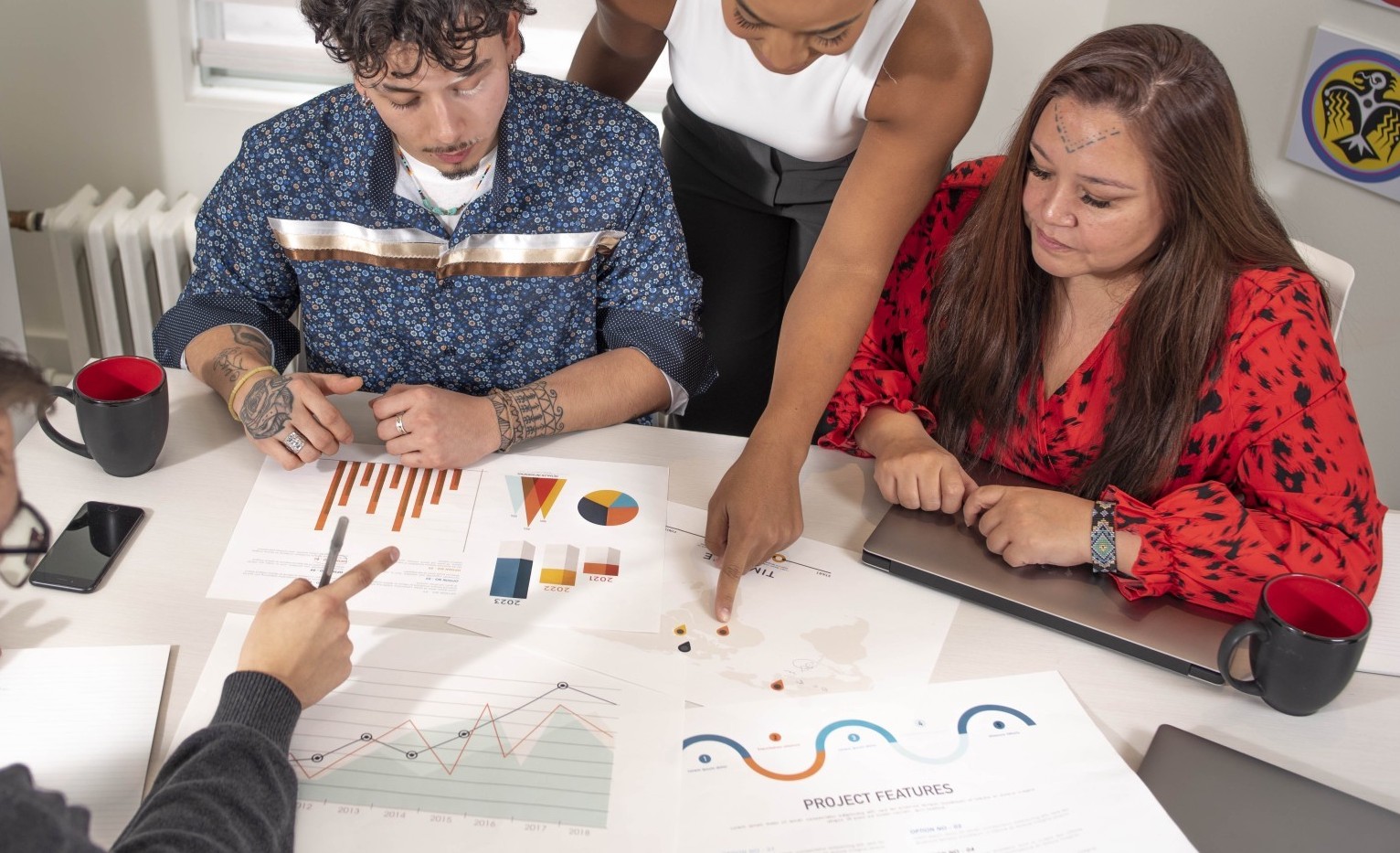
Indigenous Insights
A study grounded in respect
We approach this project with great humility, respect, and an enduring commitment to the highest standards of research excellence. We appreciate that undertaking research with Indigenous peoples living in Canada cannot be done without an understanding of how research historically was used in service of imperialism and that many of the consequences of this are still present today.
The relationship between researcher and respondent is something that must be considered in any study, but history and experience – including past researchers behaving unethically – have created a particularly strained relationship between researchers and Indigenous peoples living in Canada.
At Earnscliffe we are mindful of these issues and are committed to an on-going process of learning and improvement. With this in mind, we regularly seek cultural guidance and learning from a range of external stakeholders and work with Indigenous suppliers in the execution of this study.
We are also fortunate to be able to draw on extensive internal expertise. Our team of professionals includes Allan Gregg, who worked with the Truth and Reconciliation Commission as well as with various organizations advocating on behalf of Indigenous peoples.
Research design

Includes First Nations (both those living on- and off-reserve), Métis, and Inuit

Every 90 days we survey 500 Indigenous respondents

2023-24 is the seventh year of the study

A nationally representative sample based off 2021 census numbers

Quotas based off gender, age, and location
Frequently asked questions
What is the composition of the study?
Each wave has a sample of 500 respondents, statistically representative of the Indigenous population of Canada based off the 2021 StatsCan numbers. The sample includes First Nations both on- and off-reserve, Métis, and Inuit respondents.
What level of participation do we have in remote communities?
All communities and people are reflected in our sample. While the exact number will vary by wave, the percentage of remote respondents from rural or remote communities averages around 11-12%. This includes respondents both living on- and off-reserve.
What is Indigenous involvement in the study?
We seek cultural guidance and learning from a range of external Indigenous stakeholders, are proud to spotlight the contributions of our Indigenous team members, and work with an Indigenous supplier, Indigenous Link, to source some of the sample for this study.
Can a new client get access to the historical data?
New clients will receive access to the core tracking data surrounding perceptions of governments and advocacy groups; top issues facing Canada and Indigenous peoples; and future outlooks. Access to non-tracking data is negotiated on a case-by-case basis.
Do we follow First Nations principles of OCAP?
From the outset, we have been going to some lengths to ensure we were not just adhering to applicable laws and our industry’s code of conduct, but also being mindful about conducting ourselves in a way that is respectful of unique culture, history and experiences of the Indigenous people whose opinions we seek. Along these lines, one of our original (and ongoing) partners, Indigenous Link, engaged with the First Nations Information Governance Centre (FNIGC) to ensure we are compliant with the First Nations Principles of OCAP (Ownership, Control, Access and Possession) – also known as OCAP. In the communications with FNIGC, it was recognized that our study’s relatively small, random sample of data did not easily fit into the framework OCAP was designed for – particularly since it would mean that for most First Nations communities, any particular wave of study would not likely have more than one or two responses from individuals in that community. Historically, something like population health data, would consist of data from dozens, hundreds, or in some cases, far more individuals. Information at that scale is valuable and informative data and has the potential (and past experience) of being used in ways that can impact the specific community whose data it is. However, not only is the data not useful to a community when it consists of only three individuals or less, it also poses threats to the protection of the privacy of the individual(s) from that community. As a result, we do not provide communities with their community-level data.
How do our clients use the data?
Clients use the data to inform their Indigenous engagement strategies, to understand their brand health and equity among Indigenous peoples, as well as for regulatory and government relations purposes.
Do you have a suggestion for further improvement? Please let us know.
Images of people are from CIRA’s Indigenous stock photo library, a resource created with the purpose of honouring Indigenous entrepreneurship and addressing the Indigenous representation gap in most online stock images.
Why Earnscliffe?
We are Canada’s leaders in strategic communications, government relations and opinion research. This is no small claim, but it’s one we own every day. For more than 30 years, we have been helping our clients achieve their goals in public affairs. We’re ready to help you move forward.

